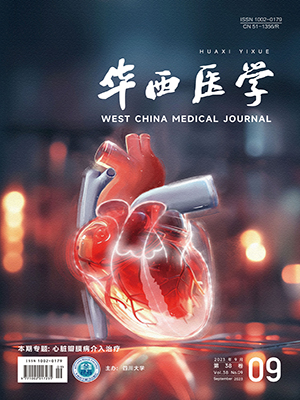摘要:目的: 探討臂叢神經磁共振成像的技術方法及其可行性。 方法 :對15例正常志愿者行雙側臂叢神經成像:包括常規快速自旋回波序列T1加權(T1W/TSE)、快速自旋回波序列T2加權(T2W/TSE)、快速自旋回波序列T2加權加SPIR脂肪抑制(T2W/SPIR)冠狀位掃描以及彌散加權背景抑制成像序列(DWIBS)軸位掃描。 結果 :T1W/TSE、T2W/TSE、及T2W/SPIR對臂叢節后神經同層顯示率分別為533%、567%和833%;DWIBS MIP重建圖像對臂叢神經的全貌顯示較為完整、清晰、直觀;T1W/TSE、T2W/TSE、T2W/SPIR及DWIBS MIP重建圖像的對比噪聲比分別為109±09、107±13、185±68和299±133,T2W/SPIR序列和DWIBS MIP重建圖像的對比噪聲比明顯高于T1W/TSE和T2W/TSE序列。 結論 :T2W/SPIR序列對臂叢神經的同層顯示率及圖像的對比噪聲比明顯高于常規T1W/TSE、T2W/TSE序列, DWIBS MIP重建圖像能夠顯示臂叢神經的全貌,兩者為臂叢神經成像較為有效的技術方法,對于臂叢神經病變的診斷即具有十分重要的意義。
Abstract: Objective: To determine the optimal sequences of brachial plexus with MRI. Methods : Fifteen volunteers were underwent MRI on 15T scanner, the Sequences of T1W/TSE/COR, T2W/TSE/COR, T2W/SPIR/COR and Diffusionweighted imaging with background body signal suppression were performed. Results : The display rates of brachial plexus postganglionic segment nerve showing at the same slice were 533%, 567% and 833% on T1W/TSE/COR, T2W/TSE/COR, T2W/SPIR/COR. Brachial plexus on DWIBS MIP were clear and complete. Contrastnoise ratio of four sequences was 109±09, 107±13, 185±68 and 299±133,respectively. Contrastnoise ratio of T2W/SPIR/COR and DWIBS MIP was significantly higher than that of the other two sequences. Conclusion : Display rate of brachial plexus and contrastnoise ratio of images on T2W/SPIR/COR were higher than those of routine sequences. Image of DWIBS MIP can show the outline of brachial plexus clearly. The two sequences were reliable and effetive techoniquic in diagnosis of brachial plexus lesion.
引用本文: 雷曉燕,王養民,張鑫,吳曉紅,張小玲,黃明剛. 臂叢神經磁共振成像技術初步研究. 華西醫學, 2009, 24(10): 2560-. doi: 復制




